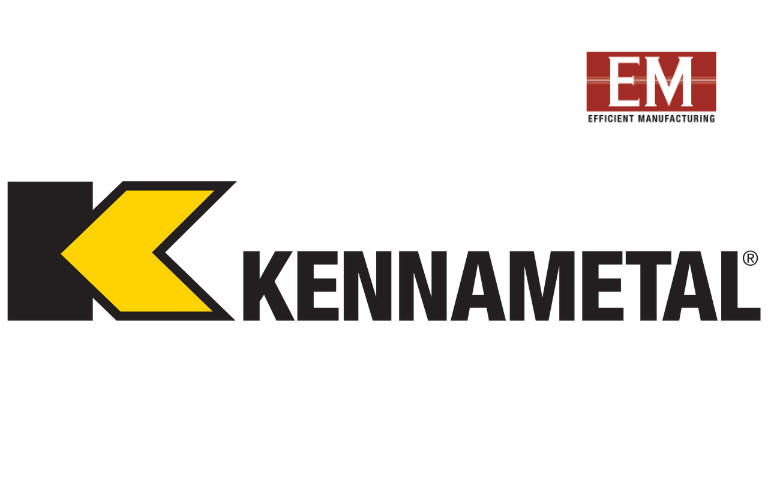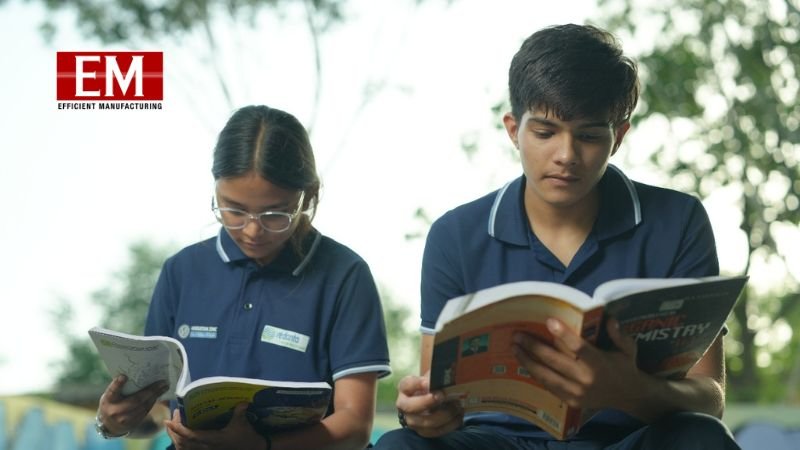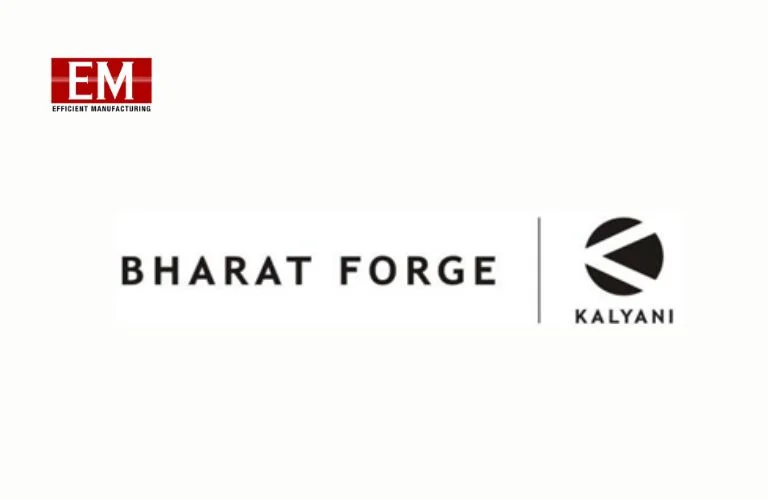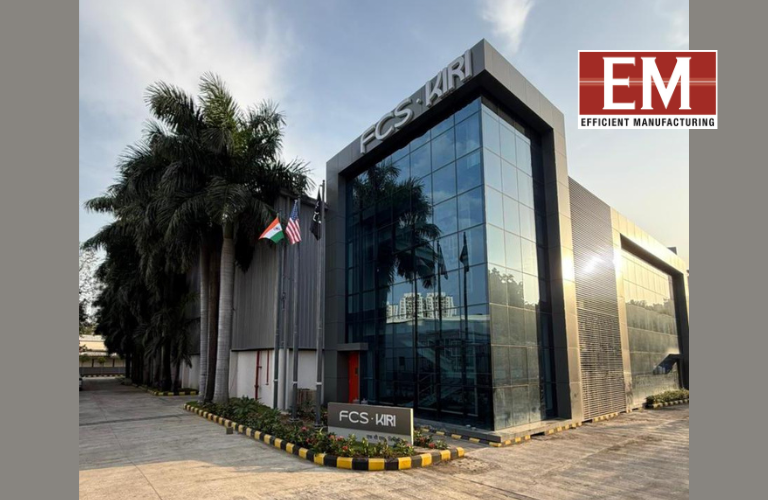In this exclusive interview, Nirmal Singh, CEO of Wheebox, an ETS Company, shares how the company is revolutionising skill assessment and employability in India through AI-driven solutions and industry-academia collaboration.
Q. What are the most striking employability trends highlighted in the India Skills Report 2025, especially within sectors like manufacturing, healthcare, and AI?
The India Skills Report 2025 underscores a transformative shift in employability across key sectors, notably manufacturing, healthcare, and artificial intelligence (AI). Manufacturing is experiencing a resurgence, driven by automation and robotics, which have spurred demand for skilled professionals in areas such as robotics engineering and automation technology. This trend aligns with the global push towards Industry 4.0, where efficiency and technological integration are paramount. In healthcare, the report highlights a significant uptick in employability, particularly in roles related to telemedicine, biotechnology, and medical device technology. This growth is attributed to the increasing adoption of digital health solutions and the need to address the challenges posed by aging populations worldwide. India’s healthcare sector is thus positioned to meet both domestic and international demands for skilled professionals. The AI sector is witnessing exponential growth, with India emerging as a hub for AI talent. The report notes a 14-fold increase in AI-skilled individuals from 2016 to 2023, positioning India among the top nations in AI talent growth. However, this rapid expansion also presents challenges, including a significant skill gap in roles such as machine learning engineers and data scientists. Addressing this gap is crucial to sustaining the sector’s growth and ensuring that India remains competitive in the global AI landscape
Q. The report mentions a significant rise in employability from 33% to over 50% in the past decade. What key factors have contributed to this improvement, and how sustainable is this trend going forward?
The India Skills Report 2025 reveals a notable increase in employability, rising from 33% to over 50% in the past decade. Several key factors have contributed to this improvement. Firstly, the expansion of vocational training programs has played a pivotal role. Initiatives like the Skill India Mission and the National Education Policy 2020 have integrated vocational education into mainstream schooling, providing students with industry-relevant skills. These programs have equipped youth with practical competencies, enhancing their employability prospects. Secondly, partnerships between educational institutions and industry bodies have facilitated curriculum updates to align with market needs. Collaborations with organizations such as AICTE and CII have ensured that educational offerings are in sync with current industry requirements, bridging the gap between education and employment.
Thirdly, the adoption of technology in education has broadened access to learning resources. Digital platforms and online courses have made skill development more accessible, enabling individuals from diverse backgrounds to enhance their competencies. Looking forward, sustaining this upward trend in employability will require continuous adaptation to technological advancements and market dynamics. Ongoing investments in skill development and industry-academia collaborations will be essential to maintain and further this progress.
Q. Despite overall improvements, certain sectors still face acute skill shortages. Can you elaborate on the domain-specific skills gaps and their implications for industries like pharmaceuticals, renewable energy, and digital commerce?
Despite overall improvements, certain sectors continue to face acute skill shortages. In the pharmaceuticals industry, there is a pressing need for professionals skilled in regulatory affairs, clinical research, and quality assurance. This shortage can impede the industry’s ability to meet global standards and expand its market reach. The renewable energy sector is experiencing a similar challenge, with a significant demand for experts in areas such as solar panel installation, wind turbine maintenance, and energy storage solutions. Addressing these skill gaps is crucial to achieving sustainability goals and transitioning to greener energy sources. In digital commerce, the rapid growth of e-commerce platforms has created a need for professionals proficient in digital marketing, data analytics, and cybersecurity. Filling these roles is vital to ensure the security and efficiency of digital transactions and to enhance customer experiences. To mitigate these skill shortages, targeted training programs and industry-specific certifications are essential. Collaborations between educational institutions, industry leaders, and government bodies can facilitate the development of specialized curricula that address these gaps.
Q. How does the Global Employability Test (GET) capture the real-world readiness of India’s youth, and what are the most common competency mismatches observed through this year’s assessment?
The Global Employability Test (GET) serves as a benchmark for assessing the real-world readiness of India’s youth. The assessment highlights several competency mismatches that need attention. One prominent issue is the disparity between technical skills and soft skills. While candidates demonstrate proficiency in technical areas, there is often a lack of communication, problem-solving, and leadership abilities. These soft skills are increasingly valued by employers and are essential for career advancement. Another mismatch is the gap between academic knowledge and practical application. Many graduates possess theoretical understanding but lack hands-on experience, making it challenging for them to adapt to workplace demands. Addressing these mismatches requires a holistic approach to education that emphasizes both technical and soft skills development. Incorporating project-based learning, internships, and industry interactions into curricula can bridge the gap between academic preparation and real-world expectations.
5. With India’s growing role in global talent mobility, what strategies would you recommend to align India’s skilling ecosystem with international workforce demands, especially in light of ageing populations in Europe and the Gulf?
Aligning India’s Skilling Ecosystem with Global Workforce Demands: A Strategic Imperative
India stands at a pivotal juncture in the global talent landscape. As countries across Europe and the Gulf grapple with aging populations and increasing skill shortages, India’s youthful demographic presents a unique opportunity to become a key provider of skilled talent. According to the India Skills Report 2025, employability in India has seen a marginal increase, rising to 51.25% from 50.33% in 2024. While this signals progress, it also underscores the need for a more robust and internationally aligned skilling ecosystem to match global demands.
To fully capitalize on its demographic dividend and meet international workforce needs, India must pursue a multidimensional strategy that blends skill development, global alignment, and inclusive growth.
1. Revamp Vocational and Technical Training
One of the most encouraging trends from the India Skills Report 2025 is the increasing focus on vocational training. Nearly 50% of students at the secondary and university levels are projected to undergo some form of vocational education by 2025. This is a positive step toward preparing Indian youth for job roles that are in high demand internationally—particularly in sectors such as healthcare, construction, hospitality, and IT.
To align with global workforce standards, it is essential to customize vocational programs based on country-specific requirements. For example, countries like Germany, which are facing acute shortages in nursing and elder care, need trained professionals who meet European skill and regulatory standards. India must create specialized tracks within vocational training that meet such international compliance benchmarks.
2. Language and Cultural Competency as Catalysts for Mobility
Language barriers often hinder workforce mobility, especially in regions like Germany, France, and the Gulf. The government of Meghalaya’s recent initiative to provide German language training to youth aimed at overseas employment is a forward-thinking model. Language programs, combined with cultural sensitization, must be integrated into skilling curricula to ensure smoother transitions and higher retention rates among international employers.
Beyond technical skills, soft skills like communication, adaptability, and cross-cultural awareness are increasingly critical. Employers abroad value candidates who are not just technically proficient but also culturally agile and workplace-ready.
3. Strengthen Industry-Academia Linkages
To ensure the workforce is job-ready, continuous engagement between academia and industry is non-negotiable. The India Skills Report 2025 stresses the need for curricula to reflect real-world job demands. Collaborative curriculum design, internships, and apprenticeships with global and Indian companies will help bridge the gap between classroom learning and industry expectations.
Additionally, involving international industry bodies and skill councils in curriculum development can help Indian institutions align more closely with global competency frameworks.
4. Leverage Technology and AI for Scalable Skilling
The use of technology in skilling initiatives has the potential to revolutionize workforce preparedness. AI-driven platforms like Wheebox have already been instrumental in skill assessments, remote learning, and predictive hiring. By leveraging data analytics, we can forecast international job trends and tailor skilling modules accordingly.
Digital platforms also enable scalable and remote learning, ensuring that even youth from Tier II and Tier III cities can access world-class training that prepares them for global opportunities.
5. Create Globally Recognized Certification Frameworks
Standardized and globally accepted certification systems are key to enhancing the credibility of India’s skilled workforce. Collaborations with international accrediting agencies and mutual recognition of qualifications can significantly ease the process of overseas employment. Initiatives like the India-EU Mutual Recognition of Skills Agreement, if expanded, can serve as templates for bilateral skill partnerships.
These certifications must be portable and embedded with digital credentials, making them easily verifiable by foreign employers.
6. Inclusive Skilling: Addressing Gender and Regional Disparities
The report highlights a worrying decline in women’s employability—from 50.9% in 2024 to 47.5% in 2025. This calls for targeted initiatives to support women in skilling programs, including scholarships, mentorships, and flexible learning formats. Likewise, focused efforts are needed to include youth from northeastern and tribal regions in the mainstream skilling ecosystem.
7. Forge Strategic International Partnerships
India must actively partner with countries experiencing labor shortages to co-create training programs that meet their specific needs. Government-to-government (G2G) agreements and public-private partnerships (PPP) can pave the way for structured migration pathways that benefit both India and host countries. Japan’s Technical Intern Training Program (TITP) and Germany’s dual vocational training model offer valuable frameworks for such collaborations.
6. The report emphasises a synergy between technical skills and human-centric abilities. How should industries and academia balance the development of both to create a truly future-ready workforce?
The India Skills Report 2025 underscores a crucial insight: the future workforce must not only possess technical expertise but also human-centric skills such as critical thinking, emotional intelligence, and adaptability. This dual emphasis is essential for navigating the complexities of a rapidly evolving global job market.
1. Integrating Human-Centric Skills into Technical Education
To cultivate a workforce adept in both technical and human-centric skills, educational institutions must revise curricula to include modules on problem-solving, communication, and emotional intelligence. For instance, incorporating case studies, simulations, and interdisciplinary projects can enhance students’ critical thinking and collaborative abilities. Such initiatives prepare graduates to tackle real-world challenges effectively.
2. Strengthening Industry-Academia Collaboration
Active partnerships between industries and educational institutions are vital for aligning academic training with market needs. Regular consultations between educators and industry experts can ensure that curricula remain relevant and responsive to technological advancements. Additionally, internships and co-op programs provide students with practical experience, bridging the gap between theoretical knowledge and workplace requirements.
3. Embracing Technology in Skill Development
Leveraging technology can facilitate the development of both technical and human-centric skills. AI-driven platforms, for example, can offer personalized learning experiences, catering to individual strengths and areas for improvement. Furthermore, digital tools can support the development of communication and collaboration skills, essential for modern workplaces.
4. Fostering Lifelong Learning and Adaptability
Given the rapid pace of technological change, fostering a culture of lifelong learning is imperative. Encouraging continuous upskilling and reskilling ensures that the workforce remains adaptable and capable of navigating new challenges. Employers and educational institutions should collaborate to provide accessible learning opportunities that promote both technical proficiency and human-centric abilities.
7. What role do partnerships with organisations like AICTE, CII, and state governments play in closing the education-to-employment gap, and which initiatives from this year stand out as particularly impactful?
The persistent gap between education and employment in India necessitates collaborative efforts among educational bodies, industry associations, and state governments. Partnerships with organizations like the All India Council for Technical Education (AICTE), the Confederation of Indian Industry (CII), and various state governments are pivotal in aligning academic curricula with industry requirements, thereby enhancing employability.
AICTE’s Strategic Initiatives
AICTE has been at the forefront of initiatives aimed at bridging the education-employment divide:
- National Employability Enhancement Mission (NEEM): This program offers on-the-job practical training to enhance employability. As of 2025, 12 agencies have been registered as NEEM facilitators, providing training to over 30,000 students.
- Employability Enhancement Training Programme (EETP): AICTE has signed Memorandums of Understanding (MoUs) with organizations like LinkedIn, ICT Academy, and Monster.com to provide training and placement support, thereby improving employment opportunities for students .
- Industry-Academia Collaboration Surveys: In partnership with CII, AICTE conducts surveys to assess and enhance the linkages between technical institutes and industries, leading to awards for institutions demonstrating exemplary industry collaboration .
CII’s Role in Fostering Innovation and Collaboration
The Confederation of Indian Industry (CII) plays a crucial role in promoting industry-academia partnerships:
- i3 Innovations Awards: In collaboration with AICTE and the Department of Science and Technology, CII organizes the India Innovation Initiative (i3) to promote science, technology, and innovation among students, encouraging the commercialization of potential innovations .
- Industry-Academia Collaboration Surveys: CII partners with AICTE to conduct surveys mapping the industry linkages of Indian technical institutes, identifying best practices and areas for improvement in the education system .
State Government Initiatives in Skill Development
State governments have implemented various programs to enhance skill development and employability:
- Madhya Pradesh’s Emerging Tech Policies: The state has launched policies focusing on sectors like semiconductors, drones, and animation, visual effects, gaming, and comics & extended reality (AVGC-XR). Collaborations with organizations like IBM India aim to provide project-based learning and internships, equipping students with skills in emerging technologies .
- Maharashtra’s ITI Upgradation: Maharashtra has signed MoUs with organizations such as SSRDPT, SEFIF, and Deasra Foundation to establish advanced laboratories in 20 Industrial Training Institutes (ITIs). These initiatives aim to provide contemporary technology training to youth, enhancing their employability in sectors like electrical, renewable energy, and industrial automation .
- Mizoram’s Apprenticeship Scheme: The Union Ministry of Skill Development and Entrepreneurship launched a pilot apprenticeship training scheme in Aizawl, Mizoram, targeting over 26,000 youth. The program offers structured, paid apprenticeships, promoting gender inclusion and aligning heritage skills with professional standards .
8. As India positions itself to contribute over 40% of the global skilled workforce by 2025, what are Wheebox’s top recommendations for policymakers to accelerate vocational training, certification alignment, and talent deployment at scale?
Answer: India is on the cusp of a transformative opportunity. With projections indicating that the country will contribute over 40% of the global skilled workforce by 2025, the onus is on policymakers to enable large-scale vocational training, streamline certification systems, and facilitate efficient talent deployment—both domestically and internationally. Based on insights from the India Skills Report 2025 and Wheebox’s ongoing work in skill assessment and workforce readiness, here are our top recommendations:
1. Build Scalable, Outcome-Oriented Vocational Training Infrastructure
To train millions efficiently, vocational education must be reimagined as a first-choice, outcome-driven pathway rather than a fallback option.
- Public-Private Partnerships (PPP): Encourage deeper involvement of industry partners in designing, funding, and delivering vocational programs. Corporates bring real-time job market knowledge and can ensure curriculum relevance.
- Focus on Tier II & III Cities: Establish advanced skilling hubs in underserved regions to democratize access and tap into latent potential across India.
- Job Role Mapping: Align training programs with emerging job roles in sectors like AI, cybersecurity, electric vehicles, construction, healthcare, and renewable energy.
2. Strengthen National and Global Certification Alignment
For Indian workers to be employable globally, certifications must be recognized across borders.
- National Skill Qualification Framework (NSQF) Integration: Fully operationalize NSQF across all skill providers to ensure standardization and portability of certifications.
- Mutual Recognition Agreements (MRAs): Collaborate with international governments and institutions to develop MRAs that validate Indian certifications abroad, particularly in high-demand countries in Europe and the Gulf.
- Digital Credentials & Skill Passports: Develop secure, portable digital skill passports that consolidate credentials, apprenticeships, and assessments—backed by blockchain or national digital identity systems.
3. Embed Human-Centric Skills in All Training Programs
While technical proficiency is essential, human-centric abilities such as communication, adaptability, and emotional intelligence are increasingly prized by global employers.
- 21st-Century Skills Integration: Mandate the inclusion of soft skills modules in every vocational course.
- Language Proficiency Training: Support language and cultural training—especially in languages like German, Japanese, and Arabic—for targeted migration to countries with labor shortages.
- Employability Assessments: Standardize soft skill and behavioral assessments (like those offered by Wheebox) to help employers benchmark candidates beyond just technical skills.
4. Accelerate Industry-Academia Convergence
The education-employment gap can only be bridged through continuous dialogue and collaboration between training institutions and industry.
- Co-Created Curriculum: Industry must co-design curricula and participate in training delivery, apprenticeships, and evaluations.
- Live Labs and Capstone Projects: Promote hands-on learning through project-based modules within vocational training centers.
- National Apprenticeship Expansion: Incentivize micro, small, and medium enterprises (MSMEs) to adopt apprenticeships by offering financial and regulatory support.
5. Leverage Technology for Skilling at Scale
Digital platforms must be central to delivering skill development at a population scale.
- AI-Powered Learning Platforms: Use adaptive learning tools to personalize skill delivery based on each learner’s aptitude and career interest.
- Remote Assessments and Proctoring: Scale certification through digital assessments that ensure integrity, accessibility, and speed.
- Real-Time Labor Market Intelligence: Leverage platforms like Wheebox to analyze demand trends and match training supply accordingly.
6. Mobilize State-Level Innovation and Execution
States play a frontline role in implementing skilling programs, and localized strategies are essential to success.
- State Skill Missions: Empower state governments to tailor programs based on regional economic strengths and labor trends.
- Incentive-Based Performance Metrics: Use employability and placement outcomes as benchmarks for state funding and recognition.
- Local Partnerships: Encourage collaborations with local industries, ITIs, and community colleges to customize skilling efforts.
7. Streamline Talent Deployment Mechanisms
A future-ready workforce is only effective if efficiently deployed.
- National Talent Exchange Platform: Develop a real-time matching system that connects certified candidates with job vacancies across the country and internationally.
- Migrant Workforce Ecosystem: Create support systems for outbound workers, including pre-departure training, legal aid, health insurance, and post-placement monitoring.
- Global Workforce Planning Council: Establish a multi-stakeholder body involving MEA, MSDE, and industry to strategically plan India’s global workforce exports based on country-specific demands.








